#House of Plantagenet
Explore tagged Tumblr posts
Text

#art#artists on tumblr#shitpost#imgoingtotouchyou#henryposting#henry vii#henry vii of england#the tudors#tudor era#war of the roses#richardposting#richard iii#king richard iii#last plantagenet#house of plantagenet#richard plantagenet#house of york
72 notes
·
View notes
Text
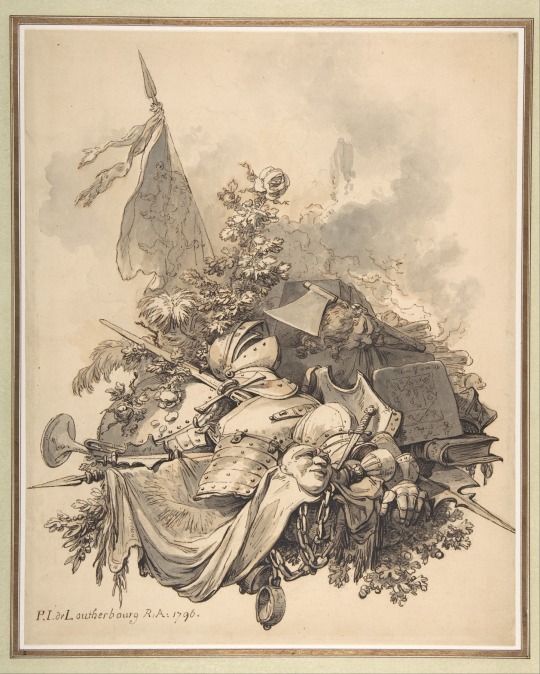
The House of York by Philip James de Loutherbourg
#philip james de loutherbourg#art#house of york#house of plantagenet#kingdom of england#history#england#english#royalty#nobility#monarchy#medieval#middle ages#wars of the roses
146 notes
·
View notes
Text
—𝐑𝐈𝐂𝐀𝐑𝐃𝐔𝐒 𝐑𝐄𝐗.

The coronation of Richard III of England, for @dickon777
32 notes
·
View notes
Text
Liber Regalis
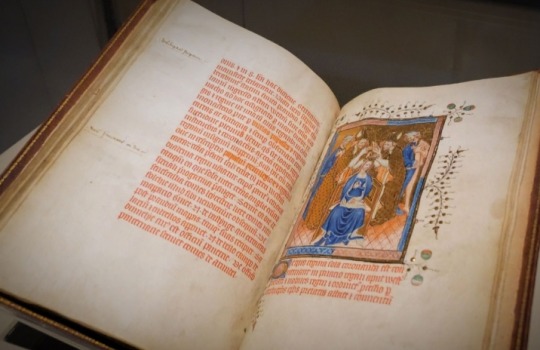
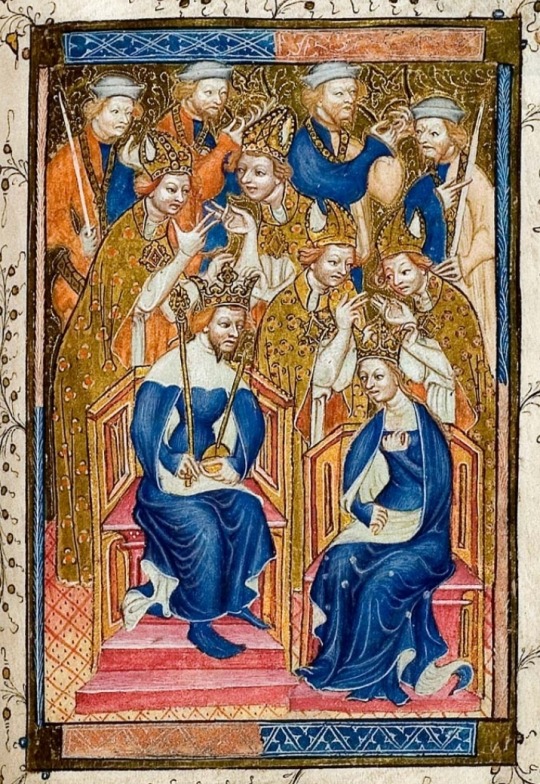
Among the remarkable treasures in our collection is the Liber Regalis - or 'royal book.'
The beautifully illustrated 14th-century English medieval illuminated manuscript gives ceremonial instructions and the order of service for the coronation.
The Abbey has been the coronation church since 1066.
The manuscript is thought to have been made for the crowning of Richard II's queen, Anne of Bohemia, here in 1382.
Despite various changes over the centuries, the instructions it gives still form the basis of the coronation service today.
You can see the Liber Regalis on display in our museum, the Abbey Galleries.
—
Richard II (6 January 1367 – c. 14 February 1400)
Anne of Bohemia (11 May 1366 – 7 June 1394)
#Liber Regalis#royal book#Abbey Galleries#Westminster Abbey#manuscript#coronation#coronation church#Richard II#Anne of Bohemia#British Royal Family#1300s#14th century#museum#history#medieval illuminated manuscript#ceremonial instructions#order of service#House of Plantagenet#House of Luxembourg
67 notes
·
View notes
Text










Women’s History Meme || Mistresses (7/10) ↬ Rosamund de Clifford (before 1140 – c. 1176)
Popular biographers barely acknowledge that Henry II had a son by Ida de Tosney, but they attach much significance to his infatuation with Rosamund Clifford, who has been termed “the great love of his life.” Henry’s supposed public flaunting of his new mistress is sometimes put forward as the source of the queen’s desire for revenge. The fair maiden Rosamund was the daughter of Walter Clifford, a Welsh border lord, and the king may have first met her at a stop at her father’s castle during his 1165 campaign in Wales. She was no more than in her early twenties while he was thirty-two, and Eleanor had passed her fortieth year. None of the late twelfth-century chroniclers makes a specific allegation that Rosamund Clifford was the cause of Eleanor’s disenchantment with her marriage, however, and the evidence is too thin to suggest that this mistress presented a greater threat to it than had Henry’s previous ones. Most significantly, the chronology of Henry II’s affair with Rosamund does not fit the alleged facts. Some biographers have dated the king’s affair with her as early as 1166, and they credit the queen’s decision to leave the English court for Poitou in 1168 to the humiliation that she suffered. Yet the affair is likely to have begun during Eleanor’s Poitevin sojourn, no earlier than 1170 and possibly not until 1173, and it only became a public spectacle after the queen’s return to England as a prisoner in 1174, lasting some six years until Rosamund’s death in 1176 or 1177. Although Henry’s second illegitimate son, William Longsword, was born shortly before or soon after his affair with Rosamund Clifford began, he was definitely not her child. Eleanor’s husband was no more faithful to the fair Rosamund than he was to his queen. If Rosamund was indeed the great love of Henry’s life, the strongest evidence for his devotion is a house known as Everswell that he ordered to be built near the royal residence at Woodstock, intended for her according to tradition. Constructed around a spring with water running through rectangular pools and surrounded by cloistered courts, it was more like palaces of Norman Sicily than any secular building in northern Europe. In later legend Rosamund’s residence would be described as a maze or labyrinth, designed to make certain that Eleanor could never find her rival. Not even the gossipy Gerald of Wales, always willing to slander the Plantagenets, depicted the queen’s incitement of her sons’ revolt as resulting from her wrath over Henry’s mistress Rosamund Clifford. In one work written only a few years after the great revolt, he implied that Henry had been discreet in his adulteries up to that time: “After the great wrong committed against their father by his sons, under their mother’s influence … [the king] openly broke his marriage vows.” Writing decades later, Gerald declared that the king “was before an adulterer in secret, and was afterwards manifestly such,” pointing out that he publicly displayed his liaison with Rosamund only after the queen’s imprisonment. Other chroniclers add nothing about Rosamund’s role in Eleanor’s estrangement from Henry. The sometime royal clerk, Roger of Howden, remained silent about the affair until after the king’s death. Rosamund’s name only appears in his account of Saint Hugh of Lincoln’s visit to the convent of Godstow in 1191, when he ordered her tomb removed from the nuns’ chapel and reburied in the churchyard, “for she was a harlot.” Eleanor’s rage against Henry for his liaison with the fair Rosamund is insufficient to explain her role in her sons’ revolt. — Eleanor of Aquitaine: Queen of France, Queen of England by Ralph Turner
#women's history meme#rosamund de clifford#house of plantagenet#medieval#english history#french history#european history#women's history#history#nanshe's graphics#the clothing is all wrong#but rachel hurd wood is my mental image of rosamund so
36 notes
·
View notes
Text

Isabella of France (1295-1358), Queen Consort of England as the wife of Edward II.
#kingdom of england#queen consort#isabella of france#she wolf of france#house of plantagenet#capetians#maurice druon#royaume de france#les rois maudits#fille de france#isabelle de france#reine d'angleterre#vive la reine#la louve de france#full length portrait#royalty
16 notes
·
View notes
Text
youtube
The Plantagenets
@sleepy-stories @mollytoonsworld @arty-e
3 notes
·
View notes
Text

“The Plantagenets (including Lancastrians and Yorks) were the definitive English Royal Family.” - Submitted by shykittycat
9 notes
·
View notes
Text

ELIZABETH OF YORK (1466 - 1503)
She was the daughter of King Edward IV and Elizabeth Woodville.
She was the Queen of England from 1486 through her marriage to King Henry VII until her death in 1503.
The marriage to Henry VII marked the end of the civil war known as the War of the Roses.
She was renowned as a great beauty for her time, tall in stature (168cm) and had a fair complexion.
She died due to a postpartum infection during her last pregnancy.
She was only 37 years old.
She had seven children with her husband;
Arthur - Prince of Wales (1486 - 1502)
Margaret - Queen of Scotland (1489 - 1541)
Henry VII - King of England (1491 - 1547)
Elizabeth (1492 - 1495)
Mary - Queen of France (1496 - 1533)
Edmund - Duke of Somerset (1499 - 1500)
Katherine (1503 - 1503)
Credit: Recreation of Elizabeth of York done by me, through Photoshop.
Reference: British School, 16th Century - Elizabeth of York (1466-1503) - RCIN 403447 Royal Collection
#elizabeth of york#house of york#house of tudor#house of plantagenet#queen consort of england#english royalty#english consorts#15th century nobility#english princesses
5 notes
·
View notes
Text




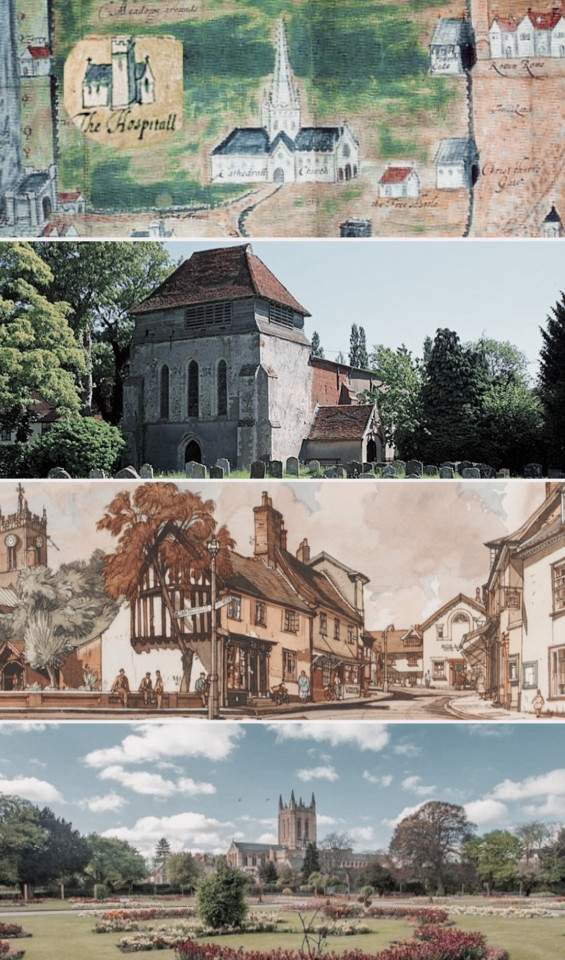



⋆ William, The Conqueror to Prince George of Wales ⋆
⤜ William I ia Prince George's 28th Great-Grandfather via his mother's paternal line.
William I of England
Henry I of England
Empress Matilda
Henry II of England
John of England
Henry III of England
Edmund, Earl of Lancaster
Henry III, King of England
Henry, IIIrd Earl of Leicester and Lancaster
Sir Henry Percy, Ist Earl of Northumberland
Mary of Lancaster, Baroness Percy
Sir Henry Percy
Sir Henry Percy, IInd Earl of Northumberland
Sir Henry Percy, IIIrd Earl of Northumberland
Lady Margaret Percy
Agnes Gascoigne
William Fairfax
John Fairfax, Master of the Great Hospital
Rev. Benjamin Fairfax, Preacher at Rumburgh Church
Benjamin Fairfax
Sarah Fairfax
Philip Meadows, Mayor of Norwich
Sarah Meadows
Thomas Martineau
Frances Elizabeth Greenhow
Francis Martineau Lupton
Olive Christina Lupton
Peter Francis Middleton
Michael Francis Middleton
Catherine Elizabeth, The Princess of Wales
Prince George Alexander Louis of Wales
#royal line from william i#british royal family#british royals#royalty#royals#brf#george's 10th birthday#happy birthday george#my edit#history#william the conqueror#house of lancaster#house of plantagenet#empress matilda#princess of wales#princess catherine#duchess of cambridge#catherine middleton#british royalty#kate middleton#royal#royaltyedit#royalty edit#historical royals#21072023
44 notes
·
View notes
Text
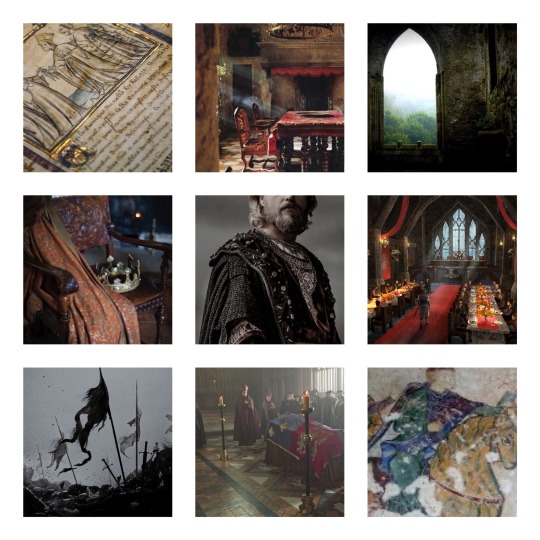
Moodboard: Henry II, King of England (1154-1189).
#plantagenet dynasty#plantagenets#plantagenet#house of plantagenet#middle ages#medieval england#Henry fitzempress#Henry II of England#Henry II#King Henry#King Henry II#King Henry II of England#Moodboard#Plantagenet edit
32 notes
·
View notes
Text






I’M ALMOST DONE GRAHHHHHH
#art#artists on tumblr#imgoingtotouchyou#fanart#richard iii#king richard iii#richardposting#last plantagenet#house of plantagenet#richard plantagenet#house of york#work in progress#procreate#digital art
24 notes
·
View notes
Text

Eleanor of England, Queen of Castile. Unknown artist.
She was Queen of Castile and Toledo as wife of Alfonso VIII of Castile (1170-1214).
#monarquía española#reino de españa#reino de castilla#reyes de españa#reina de castilla#reyes de castilla#House of plantagenet#kingdom of castile
9 notes
·
View notes
Note
Hello
What is your opinion on Elizabeth of York and Henry VII?
Individually, I would say they were a pretty prolific queen and king. Elizabeth of York, in particular, evokes a certain aura of goodness and chivalry that one would expect from one of those medieval princesses that inhabit in old tales. As for Henry, he seemed to be a determinate, resilient and shrewd man, which seemed to benefit his kingdom greatly enough.
Together, they appeared to have made a strong, stable and happy marriage, for they too were strong, stable and (together) happy. I wonder how hard it must have been for them to loose THREE children in their lifetime (four, if Elizabeth still lived when Katherine was stillborn/ died following her birth), how did it shape their relationship and that with their surviving children. Elizabeth’s death was a deadly slow blow to Henry, as time proved.
#House of York#House of Tudor#House of Plantagenet#Henry VII#elizabeth of York#tw: stillbirth#tw: child death
11 notes
·
View notes
Text

TODAY IN HISTORY:
7 February 1301
Edward of Caernarfon, later King Edward II of England, is named Prince of Wales.
It's the first time the son of the King of England was named the Prince of Wales, making Edward II the first of the current line of Princes of Wales.
—
Edward II (25 April 1284 – 21 September 1327), also called Edward of Caernarfon, was King of England from 1307 until he was deposed in January 1327.
The fourth son of Edward I, Edward became the heir to the throne following the death of his older brother Alphonso.
Beginning in 1300, Edward accompanied his father on campaigns to pacify Scotland.
In 1307, he was knighted in a grand ceremony at Westminster Abbey. Edward succeeded to the throne later that year, following his father's death.
In 1308, he married Isabella of France, the daughter of the powerful King Philip IV, as part of a long-running effort to resolve the tensions between the English and French crowns.
#King Edward II of England#Prince of Wales#British Royal Family#Edward of Caernarfon#today in history#1200s#13th century#1300s#14th century#House of Plantagenet
2 notes
·
View notes
Text
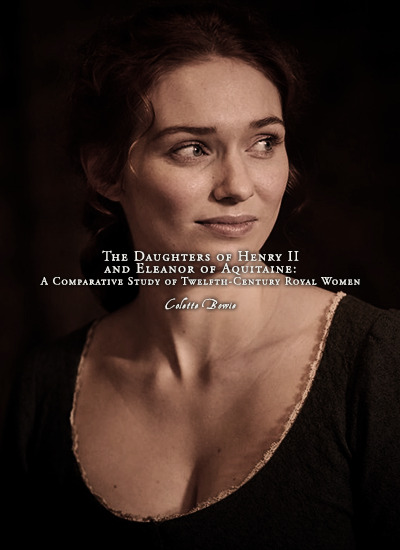

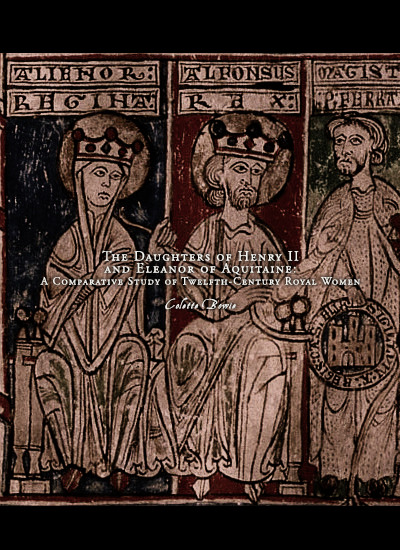
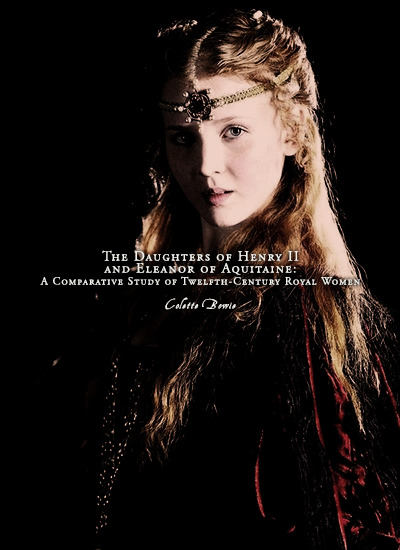


Favorite History Books || The Daughters of Henry II and Eleanor of Aquitaine: A Comparative Study of Twelfth-Century Royal Women by Colette Bowie ★★★★☆
This study compares and contrasts the experiences of the three daughters of Henry II and Eleanor of Aquitaine. The exogamous marriages of Matilda, Leonor, and Joanna, which created dynastic links between the Angevin realm and Saxony, Castile, Sicily and Toulouse, served to further the political and diplomatic ambitions of their parents and spouses. It might be expected that their choices in religious patronage and dynastic commemoration would follow the customs and patterns of their marital families, yet the patronage and commemorative programmes of Matilda, Leonor, and Joanna provide evidence of possible influence from their natal family which suggests a coherent sense of family consciousness. To discern why this might be the case, an examination of the childhoods of these women has been undertaken (Part I), to establish what emotional ties to their natal family may have been formed at this impressionable time. In Part II, the political motivations for their marriages are analysed, demonstrating the importance of these dynastic alliances, as well as highlighting cultural differences and similarities between the courts of Saxony, Castile, Sicily, and the Angevin realm. Dowry and dower portions (Part III) are important indicators of the power and strength of both their natal and marital families, and give an idea of the access to economic resources which could provide financial means for patronage. Having established possible emotional ties to their natal family, and the actual material resources at their disposal, the book moves on to an examination of the patronage and dynastic commemorations of Matilda, Leonor and Joanna (Parts IV-V), in order to discern patterns or parallels. Their possible involvement in the burgeoning cult of Thomas Becket, their patronage of Fontevrault Abbey, the names they gave to their children, and finally the ways in which they and their immediate families were buried, suggest that all three women were, to varying degrees, able to transplant Angevin family customs to their marital lands. The resulting study, the first of its kind to consider these women in an intergenerational dynastic context, advances the hypothesis that there may have been stronger emotional ties within the Angevin family than has previously been allowed for.
#historyedit#history books#litedit#house of plantagenet#english history#medieval#french history#european history#women's history#history#nanshe's graphics
73 notes
·
View notes